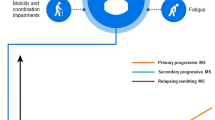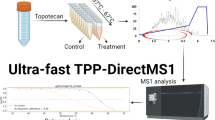Abstract
Glatiramer acetate (GA) is a mixture of synthetic copolymers consisting of four amino acids (glutamic acid, lysine, alanine, and tyrosine) with a labeled molecular weight range of 5000 to 9000 Da. GA is marketed as Copaxone™ by Teva for the treatment of multiple sclerosis. Here, the agency has evaluated the structure and composition of GA and a commercially available comparator, Copolymer-1. Modern analytical technologies which can characterize these complex mixtures are desirable for analysis of their comparability and structural “sameness.” In the studies herein, a molecular fingerprinting approach is taken using mass-accurate mass spectrometry (MS) analysis, nuclear magnetic resonance (NMR) (1D-1H-NMR, 1D-13C-NMR, and 2D NMR), and asymmetric field flow fractionation (AFFF) coupled with multi-angle light scattering (MALS) for an in-depth characterization of three lots of the marketplace drug and a formulated sample of the comparator. Statistical analyses were applied to the MS and AFFF–MALS data to assess these methods’ ability to detect analytical differences in the mixtures. The combination of multiple orthogonal measurements by liquid chromatography coupled with MS (LC–MS), AFFF–MALS, and NMR on the same sample set was found to be fit for the intended purpose of distinguishing analytical differences between these complex mixtures of peptide chains.









Similar content being viewed by others
References
Teitelbaum D, Meshorer A, Hirshfeld T, Arnon R, Sela M (1974) Therapeutic copolymer. 3849550
Teitelbaum D, Meshorer A, Hirshfeld T, Arnon R, Sela M (1971) Supression of experimental allergic encephalomyelitis by a synthetic polypeptide. Eur J Immunol 1:242–248
Konfino E, Sela M, Arnon R (1999) Copolymer-1 improvements in compositions of copolymers
Messina S, Patti F (2013) The pharmacokinetics of glatiramer acetate for multiple sclerosis treatment. Expert Opin Drug Metab Toxicol 9(10):1349–1359
Schrempf W, Ziemssen T (2007) Glatiramer acetate: mechanisms of action in multiple sclerosis. Autoimmun Rev 6(7):469–475
Buzzard KA, Broadley SA, Butzkueven H (2012) What do effective treatments for multiple sclerosis tell us about the molecular mechanisms involved in pathogenesis? Int J Mol Sci 13(10):12665–12709
Carter NJ, Keating GM (2010) Glatiramer acetate: a review of its use in relapsing-remitting multiple sclerosis and in delaying the onset of clinically definite multiple sclerosis. Adis Drug Eval 70(12):1545–1577
Teva Neuroscience I Copaxone (glatiramer acetate injection) package insert. Kfar-Saba, Israel
De Stefano N, Filippi M, Confavreux C, Vermersch P, Simu M, Sindic C, Hupperts R, Bajenaru O, Edan G, Grimaldi L, Marginean I, Medaer R, Orefice G, Pascu O, Pelletier J, Sanders E, Scarpini E, Mancardi G (2009) The results of two multicenter, open-label studies assessing efficacy, tolerability and safety of protiramer, a high molecular weight synthetic copolymeric mixture, in patients with relapsing-remitting multiple sclerosis. Mult Scler 15(2):238–243
Varkony H, Weinstein V, Klinger E, Sterling J, Cooperman H, Komlosh T, Ladkani D, Schwartz R (2009) The glatiramoid class of immunomodulator drugs. Expert Opin Pharmacother 10(4):657–668
Ramot Y, Rosenstock M, Klinger E, Bursztyn D, Nyska A, Shinar DM (2012) Comparative long-term preclinical safety evaluation of two glatiramoid compounds (glatiramer acetate, Copaxone(R), and TV-5010, protiramer) in rats and monkeys. Toxicol Pathol 40(1):40–54
Sigma-Aldrich Catalog - Poly(Ala, Glu, Lys, Tyr) 6:2:5:1 hydrobromide. http://www.sigmaaldrich.com/catalog/product/sigma/p1152?lang=en®ion=US. Accessed 18 Sept 2014
Schellekens H, Klinger E, Muhlebach S, Brin JF, Storm G, Crommelin DJ (2011) The therapeutic equivalence of complex drugs. Regul Toxicol Pharmacol RTP 59(1):176–183
Keire DA, Trehy ML, Reepmeyer JC, Kolinski RE, Ye W, Dunn J, Westenberger BJ, Buhse LF (2010) Analysis of crude heparin by (1)H NMR, capillary electrophoresis, and strong-anion-exchange-HPLC for contamination by over sulfated chondroitin sulfate. J Pharm Biomed Anal 51(4):921–926
Sommers CD, Ye H, Kolinski RE, Nasr M, Buhse LF, Al-Hakim A, Keire DA (2011) Characterization of currently marketed heparin products: analysis of molecular weight and heparinase-I digest patterns. Anal Bioanal Chem 401(8):2445–2454
Gucinski AC, Boyne MT 2nd, Keire DA (2015) Modern analytics for naturally derived complex drug substances: NMR and MS tests for protamine sulfate from chum salmon. Anal Bioanal Chem 407(3):749–759
Gucinski AC, Boyne MT 2nd (2014) Identification of site-specific heterogeneity in peptide drugs using intact mass spectrometry with electron transfer dissociation. Rapid Commun Mass Spectrom RCM 28(15):1757–1763
Korgel BA, Zanten JHV, Monqouquette HG (1998) Vesicle size distributions measured by flow field-flow fractionation coupled with multiangle light scattering. Biophys J 74:3264–3272
Yoshida T (2004) Peptide separation by hydrophilic-interaction chromatography: a review. J Biochem Biophys Methods 60(3):265–280
Wishart DS, Bigam CG, Holm A, Hodges RS, Sykes BD (1995) 1H, 13C and 15N random coil NMR chemical shifts of the common amino acids. I. Investigations of nearest-neighbor effects. J Biomol NMR 5(1):67–81
Gottlieb HE, Kotlyar V, Nudelman A (1997) NMR chemical shifts of common laboratory solvents as trace impurities. J Org Chem 62(21):7512–7515
Mannig A, Baldauf NA, Rodriguez-Romo LA, Yousef AE, Rodriguez-Saona LE (2008) Differentiation of Salmonella enterica serovars and strains in cultures and food using infrared spectroscopic and microspectroscopic techniques combined with soft independent modeling of class analogy pattern recognition analysis. J Food Prot 71(11):2249–2256
Gryniewicz-Ruzicka CM, Rodriguez JD, Arzhantsev S, Buhse LF, Kauffman JF (2012) Libraries, classifiers, and quantifiers: a comparison of chemometric methods for the analysis of Raman spectra of contaminated pharmaceutical materials. J Pharm Biomed Anal 61:191–198
Johnstone IM, Lu AY (2009) On consistency and sparsity for principal components analysis in high dimensions. J Am Stat Assoc 104(486):682–693
Witten DM, Tibshirani R, Hastie T (2009) A penalized matrix decomposition, with applications to sparse principal components and canonical correlation analysis. Biostatistics 10(3):515–534
Acknowledgments
Funding and support for this work was provided by the CDER Critical Path Program and is gratefully acknowledged.
Conflict of interest
The authors declare that they have no competing interests.
Author information
Authors and Affiliations
Corresponding author
Additional information
FDA disclaimer
This article reflects the views of the authors and should not be construed to represent FDA’s views or policies.
Electronic supplementary material
Below is the link to the electronic supplementary material.
ESM 1
(PDF 1.42 mb)
Rights and permissions
About this article
Cite this article
Rogstad, S., Pang, E., Sommers, C. et al. Modern analytics for synthetically derived complex drug substances: NMR, AFFF–MALS, and MS tests for glatiramer acetate. Anal Bioanal Chem 407, 8647–8659 (2015). https://doi.org/10.1007/s00216-015-9057-8
Received:
Revised:
Accepted:
Published:
Issue Date:
DOI: https://doi.org/10.1007/s00216-015-9057-8




